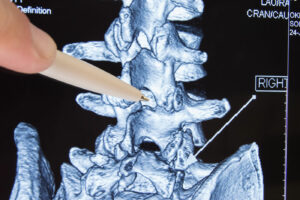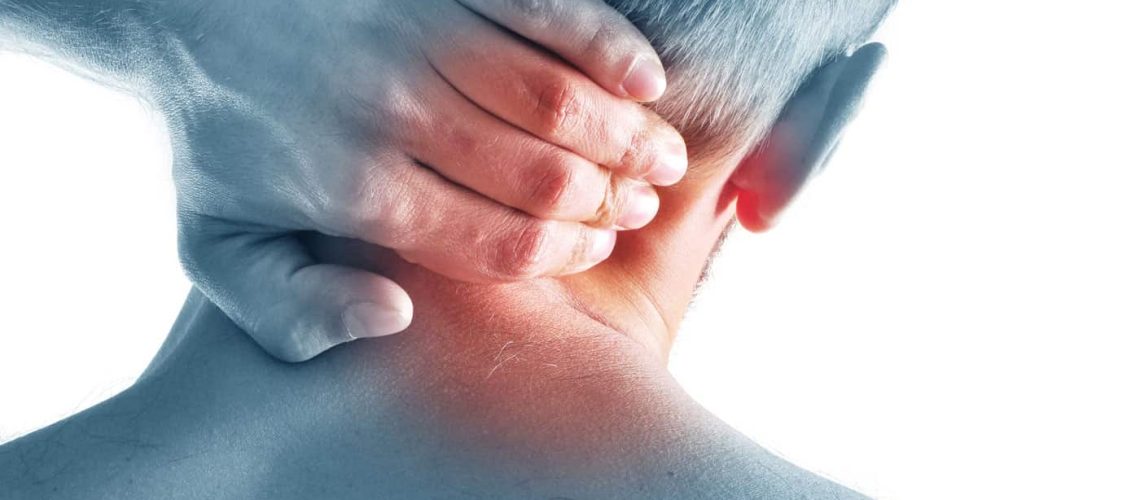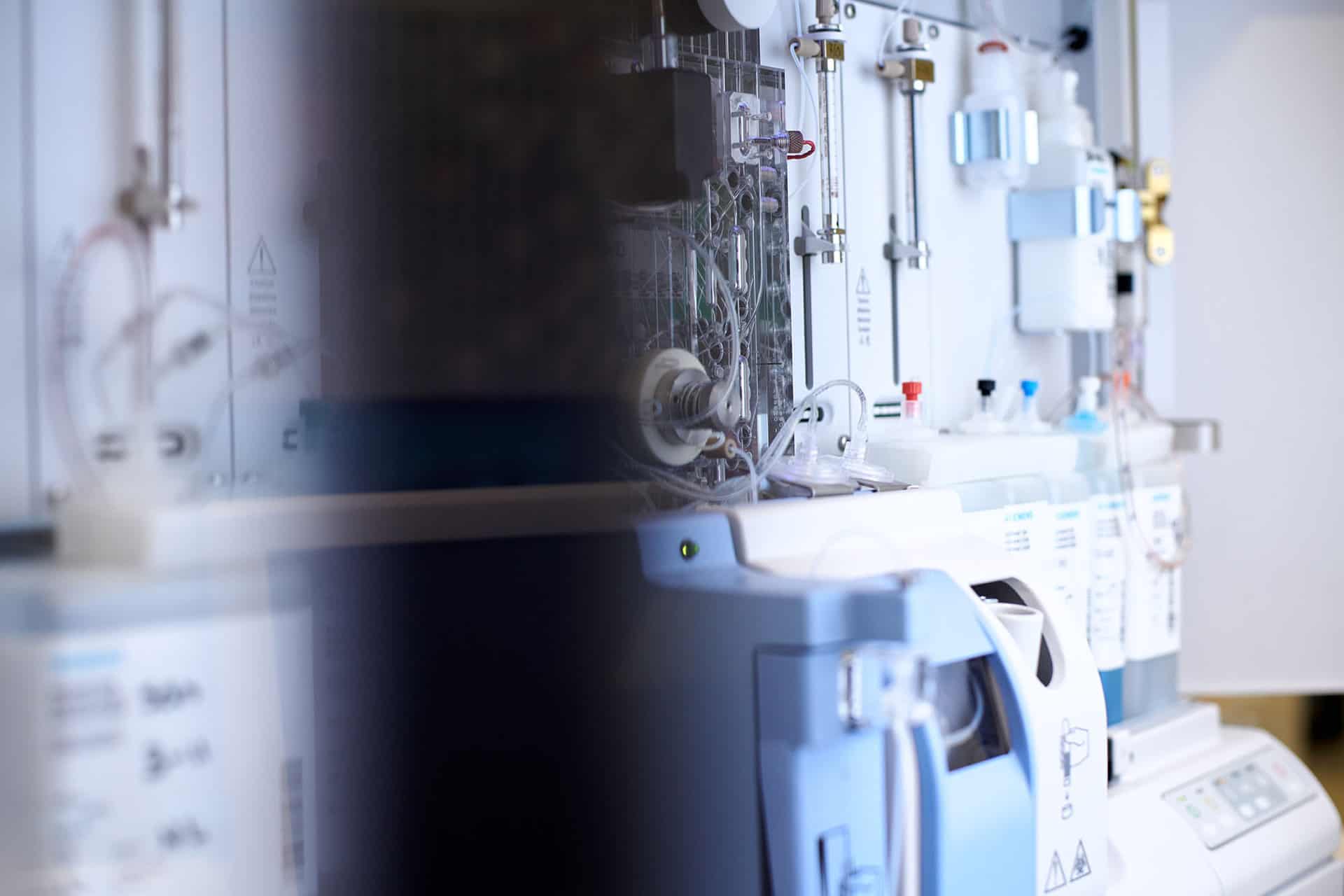Cervical radiculopathy is a condition in which the nerve root in the cervical spine – the section of the spine between the cranium and the thoracic vertebrae (which attach to the ribs) – becomes damaged or inflamed. This causes various neurological issues.
Symptoms of Cervical Radiculopathy
 The neurological issues resulting from cervical radiculopathy radiate from the neck and into the shoulder, arm, hand, and fingers. Symptoms include:
The neurological issues resulting from cervical radiculopathy radiate from the neck and into the shoulder, arm, hand, and fingers. Symptoms include:
- Altered reflexes
- Numbness
- Tingling
- Burning pins-and-needles sensations
- Pain
- Weakness
Cervical Nerve Roots As They Relate To Cervical Radiculopathy
The cervical spine contains 8 pairs of cervical nerve roots (C1 – C8) which branch out from the spinal cord through intervertebral foramen (openings between vertebrae). The cervical nerve roots make their way into various muscles and allow for the movement and function of the shoulders, arms, hands, and fingers.
Causes Of Cervical Radiculopathy
Herniated discs are often the cause of cervical radiculopathy. A herniated disc is when a part of the inner, jelly-like portion of the vertebrae is forced out via a tear in the outer bony section – this jelly-like substance then puts pressure on a cervical nerve.
Infections and tumors are also common causes.
Risk Factors For Cervical Radiculopathy
- Old age: As the spine ages, it begins to deteriorate. This can close intervertebral foramen and put pressure on various spinal nerves.
- Rigorous or strenuous activities: Weight-lifting, martial arts, and similar activities can cause herniated discs thus leading to cervical radiculopathy.
- Repetitive motions of the neck: This could include truck driving (intense vibrating can cause spinal issues), pool diving, etc.
Development Of Cervical Radiculopathy
Older people are more likely to develop cervical radiculopathy due to spinal degeneration over time. Younger people can develop it due to injury, damage, infection, and so on. Symptoms are usually intermittent at first but gradually become more intense and prolonged over time. They can also occur quickly.
How Cervical Radiculopathy Is Diagnosed
Typically, pain doctors will diagnose cervical radiculopathy via the following methods:
- A thorough examination of the patient’s medical history.
- Physical examination – This usually involves examining the neck for tenderness and limited range of motion, as well as tests on the arm and hand for limitations in reflexes, sensation, and strength.
- Spurling’s test – This involves compressing the cervical spine to see if symptoms (temporarily) worsen. Usually, a doctor will instruct the patient to turn their head to the side where the symptoms radiate from, then they apply pressure to the top of the patient’s head. This causes the cervical foramen to narrow, further compressing the nerves.
Imaging and electrodiagnostic testing can also be used if necessary.
Treatment For Cervical Radiculopathy
 There are many possible treatments for cervical radiculopathy and pain doctors often use one or a combination of the following:
There are many possible treatments for cervical radiculopathy and pain doctors often use one or a combination of the following:
Non-surgical treatment:
- Physical therapy
- Ice and heat therapy
- Medications
- Steroid injections
- Manual manipulation (chiropractic work)
- Cervical traction (gently pulling up the head)
Surgical treatment:
- Anterior cervical discectomy and fusion – This involves making a small incision in the neck, removing the disc, and fusing the area to maintain height and allow spinal nerves to continue to operate correctly.
- Artificial disc replacement





